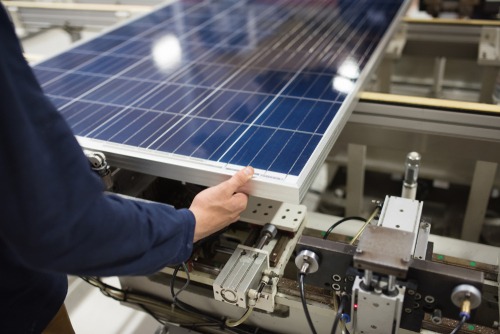DOE offers $45M for solar consortium, domestic advances for solar, grid manufacturing

In support of the Biden administration’s goal of decarbonizing the power sector by 2035, the U.S. Department of Energy (DOE) announced this week that $45 million will be given to projects advancing domestic solar manufacturing and grid technologies.
This includes $25 million to set up a public-private consortium to address grid integration technology. Co-led by the National Renewable Energy Laboratory, the University of Washington, and the Electric Power Research Institute, it will focus on grid-forming inverters as a means of allowing solar and other inverter-based energy sources to restart the grid without spinning turbines, such as those typically seen in oil or coal-fired power plants. National labs, universities, utilities, and more will be included in the organization.
“To flip the switch on climate change, we need a grid that’s chock full of renewable energy that’s also cheap and accessible,” Secretary of Energy Jennifer Granholm said. “The universities, small businesses, and national labs behind these projects are building the critical components of America’s future grid, making it more resilient on our way to a 100 percent clean power system.”
The remainder will be split between data collection and commercialization of solar innovations. Specifically, $14 million will advance nine American-made solar efforts, including hardware and manufacturing projects. In each case, their efforts could help lower costs and aid the integration of solar into the larger energy grid. The means of doing so vary widely, though, from a solar heat system that dries out sewage and converts it to fertilizer to a low-cost electrical fire prevention device.
The last $6 million of these funds will go to two projects focused on creating sensor hardware and system designs to aid utilities in collecting data about how much renewable energy is being generated by residential and commercial solar photovoltaics. This information could prove invaluable in the days to come, as DOE expects hundreds of gigawatts of solar and wind sources to come online over the next 15 years.
All selected projects are part of DOE’s Solar Energy Technologies Office Fiscal Year 2021 Systems Integration and Hardware Incubator funding program.
